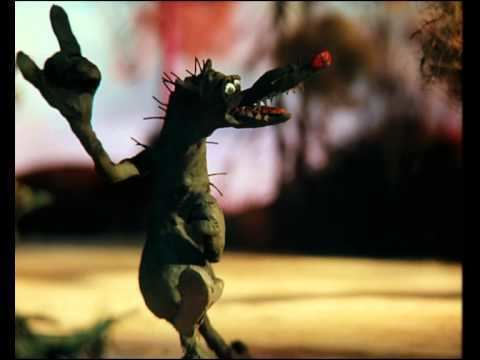Initial release 27 August 1990 | Director Garri Bardin Story by Yuri Entin | |
 | ||
Cast Armen Dzhigarkhanyan, Svetlana Stepchenko, Yevdokiya Urusova, Elizaveta Razinova, Vladimir Vinogradov Awards Nika Award for Best Animated Feature Film Similar About the Little Red Riding H, Petia and Little Red Riding H, Adagio, Puss in Boots, The Ugly Duckling | ||
Seryi Volk & Krasnaya Shapochka, literally "Grey Wolf and Little Red Riding Hood" is a claymation film, produced in the USSR by Garri Bardin in 1990, a year before the USSR actually did break up. The film is considered a parody of the demise of the USSR blended into the children's story of "Little Red Riding Hood". There are also fragments of "The Three Little Pigs" and "Snow White and the Seven Dwarfs" used as well although they are quite minimal. Snow White herself does not make any appearance.
Contents
Due to its blend of children's characters and political satire, the film is considered enjoyable to different audiences on different levels.
The film is mainly in Russian, although there is a small amount of dialogue in French.
The film starts with two statues standing side by side, one holding a hammer, the other holding a sickle - that is a reference (or maybe a parody) of the monument Worker and Kolkhoz Woman by Vera Mukhina, which is a Mosfilm logo and appears at the beginning of every Mosfilm movie - and then a radio announcement can be heard.
The film was once shown on Channel 4 in the UK as part of their Four Mations - Secret Passions series (a television show on the British TV channel showing animations from all over the world) as this was the last show in the current series, there was no interview with Garri Bardin himself. It was shown with English subtitles and the translation was adapted to fit the music and still rhyme, using poetic licence. For unknown reasons, the fragments of "The Three Little Pigs" and "Snow White and the Seven Dwarfs" used, were omitted. The same goes for the part where the wolf approaches the doctor for the second time (possibly because one of the seven dwarfs was present in the same scene).
Brief synopsis
The Grey Wolf represents communism where the wolf swallows up people from all walks of life, even though they have done nothing against him and even a doctor who fixed a set of teeth for him, against his better judgement as the wolf was forced by the authorities to lose his original set of teeth for previous undisclosed trouble.
Eventually everyone inside him break free after doing their best to keep feeling happy and calm, led by the elderly grandmother of whom the wolf must have assumed would have been the weakest and least likely to start a revolt.
The wolf (who is still alive), tries to make one last attempt to salvage his freedom and fearful reputation by approaching the doctor to fix his teeth again, only for him to hit the wolf with a peace protest sign and then a trio of huntsmen shackle him to it. The mob then march off leaving the wolf behind, chained up.
All this started over the wolf's attempts to eat the pie made by Little Red Riding Hood's mother for her daughter to take to her grandmother in Paris, France, all the way, on her own from Moscow, Soviet Union (now Russia).
Soundtrack
This film can be considered as a musical, as most of the words are sung.
A few common tunes are used to form part of the musical score used for in the film soundtrack, such as "Mack the Knife" and the "Tea for Two Cha-Cha" (both American tunes) as well as "La Vie En Rose", which was made famous by "Édith Piaf". The final song is loosely based on "Auld Lang Syne"
